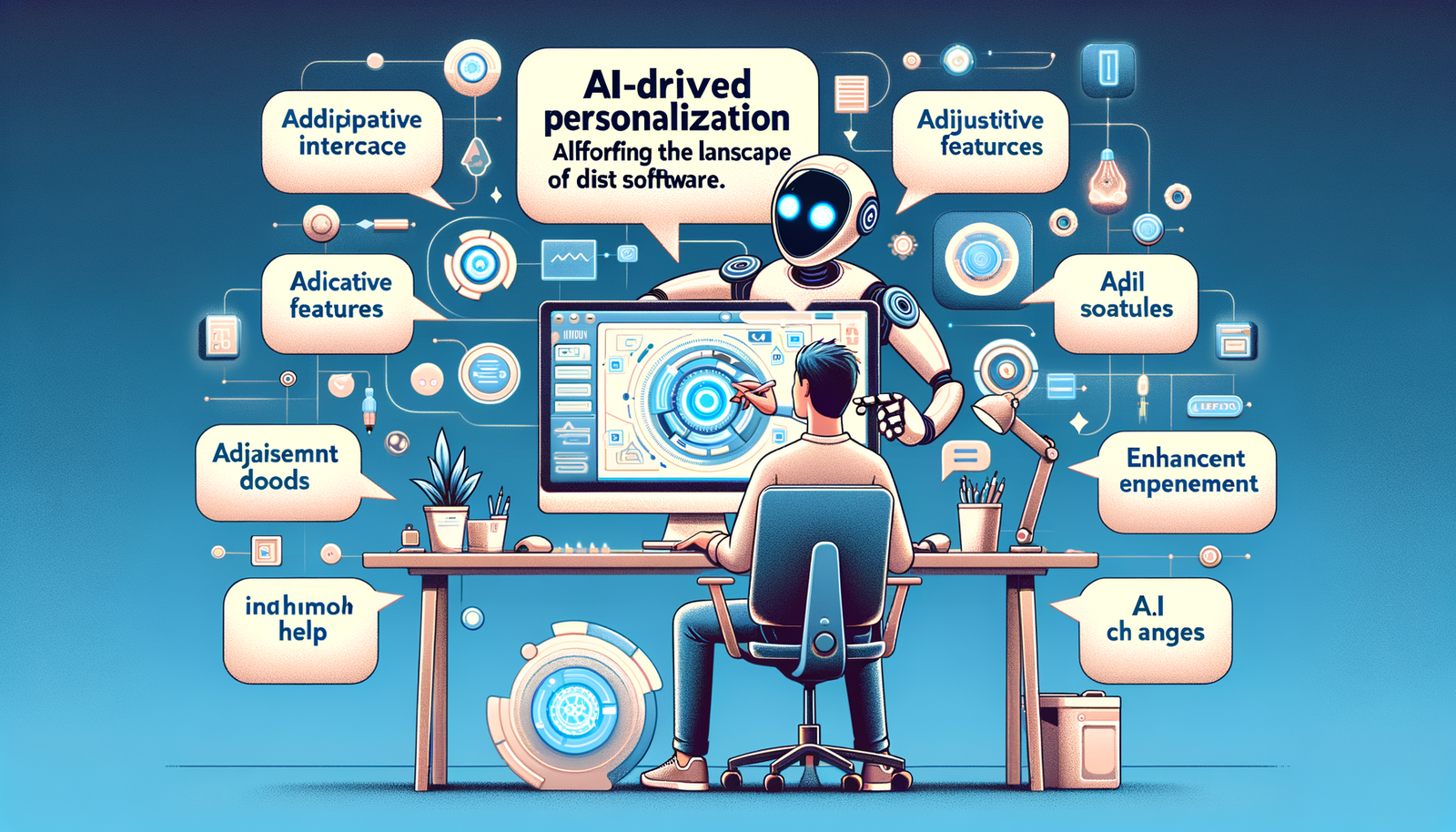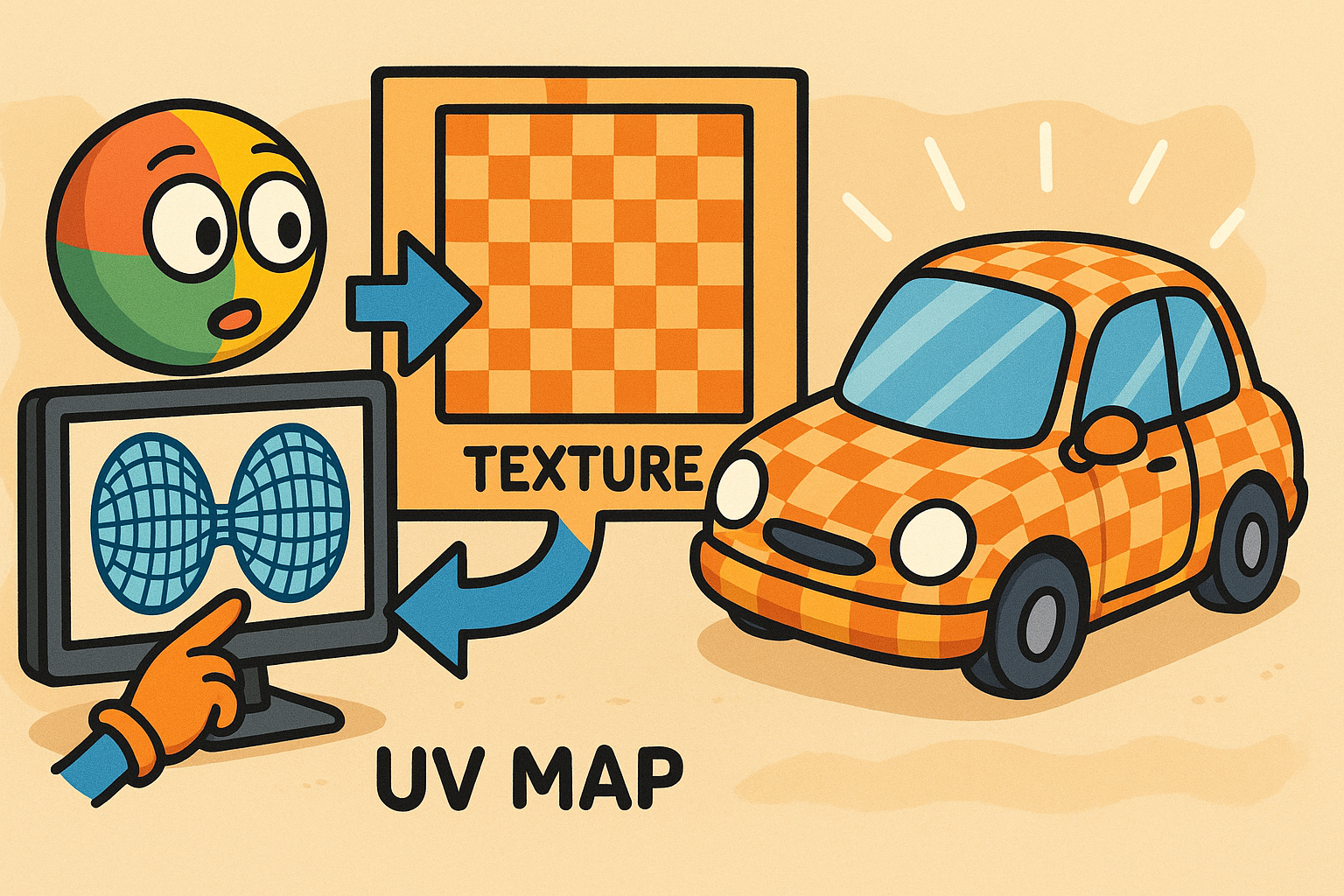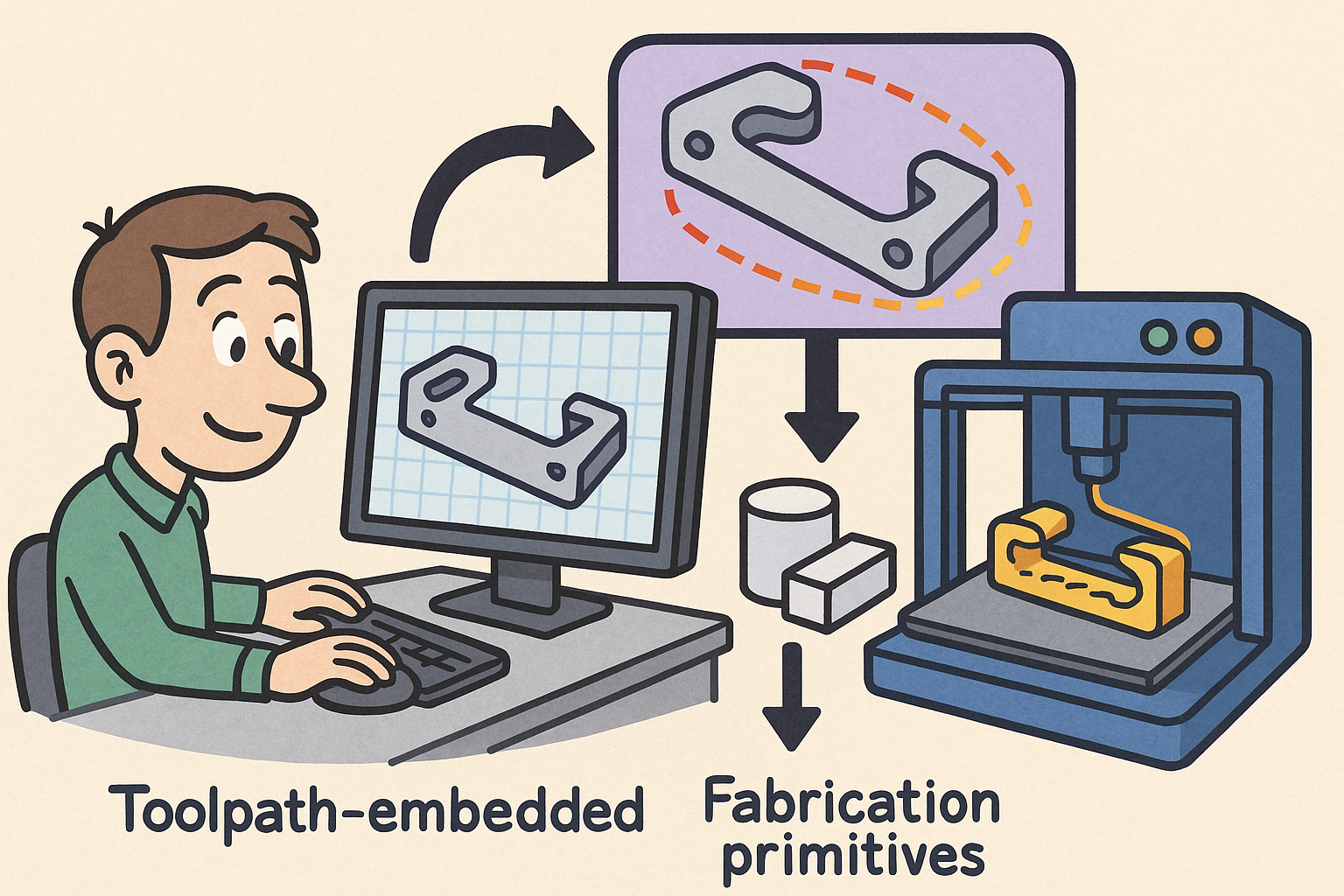Your Cart is Empty
Customer Testimonials
-
"Great customer service. The folks at Novedge were super helpful in navigating a somewhat complicated order including software upgrades and serial numbers in various stages of inactivity. They were friendly and helpful throughout the process.."
Ruben Ruckmark
"Quick & very helpful. We have been using Novedge for years and are very happy with their quick service when we need to make a purchase and excellent support resolving any issues."
Will Woodson
"Scott is the best. He reminds me about subscriptions dates, guides me in the correct direction for updates. He always responds promptly to me. He is literally the reason I continue to work with Novedge and will do so in the future."
Edward Mchugh
"Calvin Lok is “the man”. After my purchase of Sketchup 2021, he called me and provided step-by-step instructions to ease me through difficulties I was having with the setup of my new software."
Mike Borzage
AI-Driven Personalization: Revolutionizing Design Software Through Adaptive Interfaces and Enhanced User Experience
December 27, 2024 9 min read


Contextualizing Personalization in Design Software
In the rapidly evolving landscape of software development, user-centric design has emerged as a pivotal cornerstone in creating applications that not only meet but anticipate the needs of users. Modern design software is no exception, as professionals demand tools that adapt to their workflows, preferences, and project requirements. The significance of personalization in design software cannot be overstated; it enhances usability, improves efficiency, and elevates the overall user experience. As the complexity of design tasks grows, so does the necessity for software that intuitively aligns with the user's unique approach to creativity and problem-solving.
The advent of artificial intelligence (AI) has ushered in a new era of possibilities for personalization. Advancements in AI technologies have enabled software to learn from user interactions, predict needs, and adjust interfaces dynamically. This evolution is transforming design software from static tools into intelligent assistants that evolve alongside the user. By leveraging machine learning algorithms and data analysis, AI empowers software to offer tailored suggestions, optimize workflows, and reduce friction in the creative process. The integration of AI-driven personalization is not just an enhancement but a fundamental shift towards more responsive and adaptive design environments.
Purpose and Scope of the Article
The purpose of this article is to delve into the mechanisms by which AI-driven personalization is revolutionizing design software interfaces. We will explore how machine learning algorithms analyze user behavior to create adaptive and intuitive interfaces that cater to individual preferences. By examining the benefits of personalized design environments, we aim to highlight how such advancements enhance user experience, increase productivity, and provide tailored functionality that aligns with specific project needs.
Additionally, the article will address the challenges and ethical considerations inherent in implementing AI personalization. As we navigate the complexities of data privacy, security, and ethical algorithm design, it becomes crucial to balance innovation with responsibility. Future directions in AI personalization will also be discussed, outlining potential advancements and the evolving relationship between designers and intelligent software tools. Through this comprehensive exploration, we hope to provide valuable insights into the current state and future potential of AI-driven personalization in design software.
Machine Learning Algorithms
At the heart of AI-driven personalization in design interfaces are machine learning algorithms that enable software to learn from data and make intelligent decisions. These algorithms can be broadly categorized into supervised learning, unsupervised learning, and reinforcement learning, each playing a unique role in personalization.
Supervised learning algorithms utilize labeled datasets to train models that can predict outcomes based on input data. In the context of design software, they can help in predicting user preferences by analyzing historical interaction data. Unsupervised learning, on the other hand, deals with unlabeled data and is instrumental in discovering hidden patterns or intrinsic structures within user behavior data. This is particularly useful for segmenting users based on their interaction styles or identifying common feature usage patterns without prior labeling. Reinforcement learning involves algorithms that learn optimal actions through trial and error interactions with an environment to maximize a reward signal. In design interfaces, reinforcement learning can adapt the interface in real-time, improving the user experience by continuously learning from ongoing interactions.
By integrating these types of algorithms, design software can create a robust personalization framework. The software can adjust to individual workflows by learning from past actions, predict which tools the user might need next, and modify the interface to streamline tasks. The combination of different machine learning approaches allows for a more nuanced understanding of user behavior, leading to a highly personalized and efficient design environment.
User Behavior Analysis
Understanding and analyzing user behavior is a critical component of AI-driven personalization. By tracking and interpreting user interactions with the software, AI systems can gather valuable data that reflects individual preferences and working styles. This analysis involves monitoring various aspects such as tool usage frequency, sequence of actions, time spent on specific tasks, and customization settings.
Identifying patterns within this data enables the software to predict user needs effectively. For instance, if a user frequently adjusts certain parameters after performing a specific action, the software can learn to automate these adjustments or suggest shortcuts. This predictive capability enhances the efficiency of the design process by reducing repetitive tasks and anticipating the user's workflow requirements.
Moreover, user behavior analysis supports the creation of personalized recommendations and feature suggestions. By understanding the context in which certain tools are used, the software can provide context-aware assistance that is aligned with the user's current project phase or design objectives. This level of personalization not only improves productivity but also contributes to a more intuitive and satisfying user experience.
Adaptive Interface Components
Adaptive interface components are the tangible elements of AI-driven personalization that users interact with directly. These components include dynamic toolbars, customizable layouts, and context-aware features that adjust based on user behavior and preferences. The goal of adaptive interfaces is to create a seamless interaction environment where the most relevant tools and options are readily accessible.
Dynamic toolbars can reorganize themselves to highlight frequently used tools or group functionalities that are commonly used together. Customizable layouts allow users to arrange interface elements in a way that aligns with their workflow, while the software learns and suggests optimal configurations over time. Context-aware feature suggestions provide proactive assistance by offering tools and options that are pertinent to the current task or design context.
These adaptive components enhance the usability of design software by reducing the time users spend searching for functions and by simplifying complex interfaces. By presenting a personalized interface that evolves with the user's needs, the software becomes more than just a tool—it becomes a collaborative partner in the creative process.
Enhanced User Experience
AI-driven personalization significantly enhances the user experience by creating a design environment tailored to individual preferences and workflows. A streamlined workflow means that users can focus more on creativity and less on navigating complex software interfaces. Personalized interfaces minimize the cognitive load required to locate tools and functions, making the design process more intuitive and efficient.
For new users, personalized interfaces can reduce learning curves by simplifying the interface to essential tools and gradually introducing more advanced features as the user's proficiency grows. This adaptive learning approach helps users build confidence and competence without becoming overwhelmed by the software's full complexity.
Overall, enhanced user experience through personalization leads to higher satisfaction, increased engagement, and better outcomes in design projects. By aligning the software environment with the user's unique needs and preferences, AI-driven personalization fosters a more productive and enjoyable interaction with design tools.
Increased Efficiency and Productivity
One of the most tangible benefits of AI-driven personalization is the significant boost in efficiency and productivity. By automating routine tasks and providing intelligent feature recommendations, the software reduces the time and effort required to perform repetitive actions. This allows designers to allocate more time to creative problem-solving and innovation.
Personalized interfaces can minimize unnecessary steps in the design process by anticipating user needs and presenting relevant tools proactively. For example, if the software recognizes that a user often adjusts certain settings after applying a specific effect, it can automate this sequence or suggest it as a single action. Such optimizations streamline the workflow and eliminate redundant tasks.
The enhanced productivity afforded by personalization not only benefits individual users but can also have a cumulative effect on team performance and project timelines. By leveraging AI to optimize workflows and reduce inefficiencies, design teams can achieve higher output quality in less time.
Tailored Functionality
Tailored functionality is a hallmark of AI-driven personalization, providing users with custom toolsets and features that align with specific project requirements. This customization ensures that users have immediate access to the tools most relevant to their current tasks, enhancing both efficiency and effectiveness.
Personal dashboards allow users to monitor and manage their projects with interfaces that display the most pertinent information and controls. Personalized notifications keep users informed about updates, deadlines, or collaborative inputs relevant to their work, ensuring they stay engaged and responsive.
By offering functionality that is specifically tailored to the user's context, design software becomes a more powerful and adaptable tool. This level of personalization supports diverse workflows and project types, making the software suitable for a wide range of design disciplines and professional needs.
Data Privacy and Security
The implementation of AI-driven personalization necessitates the collection and analysis of user data, which brings data privacy and security to the forefront of considerations. Ensuring user data is protected is paramount to maintaining trust and complying with legal regulations. Users must have confidence that their personal information and usage patterns are handled responsibly and securely.
Compliance with data protection regulations such as the General Data Protection Regulation (GDPR) is essential. This involves obtaining informed consent for data collection, providing transparency about how data is used, and allowing users to control their data. Security measures must be in place to protect against unauthorized access, data breaches, and other cyber threats.
Ethical data handling practices include anonymizing data where possible and minimizing the amount of personal information collected. By prioritizing data privacy and security, developers can leverage AI personalization benefits while respecting user rights and fostering a trustworthy user relationship.
Implementation Complexities
Incorporating AI-driven personalization into design software presents several implementation challenges. One of the primary concerns is integrating personalization features without disrupting existing workflows. Users may rely on established practices, and significant changes to the interface or functionality can lead to resistance or reduce productivity if not managed carefully.
Balancing automation with user control is another critical aspect. While automation can enhance efficiency, users must retain control over their tools to ensure they can achieve desired outcomes. Providing options to customize the level of automation and personalization helps accommodate different user preferences and comfort levels with AI assistance.
Technical complexities include ensuring compatibility with various systems, managing the computational resources required for AI algorithms, and maintaining system performance. Developers must also address scalability to support a growing user base without degradation of personalization quality or system responsiveness.
Ethical Considerations
Ethical considerations play a significant role in the deployment of AI-driven personalization. One major concern is avoiding bias in AI algorithms. If the data used to train machine learning models is biased, the resulting personalization can reinforce existing prejudices or exclude certain user groups. This can lead to unfair or discriminatory outcomes, undermining the software's inclusivity and fairness.
Ensuring transparency in how personalization decisions are made is also essential. Users should have insight into why certain features are recommended or why the interface adapts in specific ways. Transparency fosters trust and allows users to understand and, if necessary, adjust the personalization mechanisms to better suit their needs.
Developers must also consider the broader implications of AI personalization on user autonomy and decision-making. While assistance can enhance efficiency, overreliance on AI recommendations may limit creative exploration or lead users to conform to the software's suggestions rather than innovating independently.
Summarizing Key Points
AI-driven personalization is transforming design software interfaces by making them more adaptive, intuitive, and aligned with individual user needs. Through the use of machine learning algorithms, software can analyze user behavior, predict preferences, and adjust interface components dynamically. The benefits of this transformation include enhanced user experience, increased efficiency, and tailored functionality that streamlines workflows and reduces learning curves.
However, the integration of AI personalization presents challenges such as data privacy concerns, implementation complexities, and ethical considerations. Balancing the advantages of personalization with the need for user control, transparency, and ethical algorithm design is crucial. Developers must navigate these challenges to create software that not only enhances productivity but also respects user rights and promotes fairness.
Future Outlook
Looking ahead, the potential advancements in AI personalization technologies are vast. As machine learning algorithms become more sophisticated, we can expect even greater levels of personalization that more accurately anticipate user needs and preferences. The evolving relationship between designers and intelligent software tools will continue to shape the creative process, with AI acting as a collaborator rather than just a tool.
Future developments may include deeper integration of virtual and augmented reality in design interfaces, providing immersive and highly personalized environments. Additionally, advancements in natural language processing could allow for more intuitive interactions with design software through voice commands or conversational interfaces.
The focus on ethical AI will also intensify, promoting the development of algorithms that are transparent, fair, and accountable. By embracing both technological innovation and ethical responsibility, the future of AI-driven personalization in design software holds the promise of empowering designers and enhancing creativity in unprecedented ways.
Final Thoughts
In conclusion, the importance of user-centric approaches in software development cannot be overstated. AI-driven personalization represents a significant step towards creating design software that truly caters to individual users, enhancing their capabilities and enriching their creative experiences. As we encourage ongoing innovation in this field, it is equally important to address the ethical considerations and challenges that arise.
By prioritizing both technological advancement and responsible practices, developers can create intelligent tools that not only boost productivity but also uphold the values of privacy, fairness, and user empowerment. The journey towards fully personalized design software is an exciting frontier, and with thoughtful development, it holds the potential to revolutionize the way we create and interact with design tools.
Also in Design News

Design Software History: UV Mapping and Texture Pipelines: From Parameter Spaces to Product Visualization
December 15, 2025 11 min read
Read More
Path-First Modeling: Embedding Toolpath-Aware Constraints and Fabrication Primitives into CAD Kernels
December 15, 2025 13 min read
Read More
Coupled Thermal–Structural–Acoustic Modeling and Optimization: A Pragmatic Playbook for Multiphysics Design
December 15, 2025 14 min read
Read MoreSubscribe
Sign up to get the latest on sales, new releases and more …


